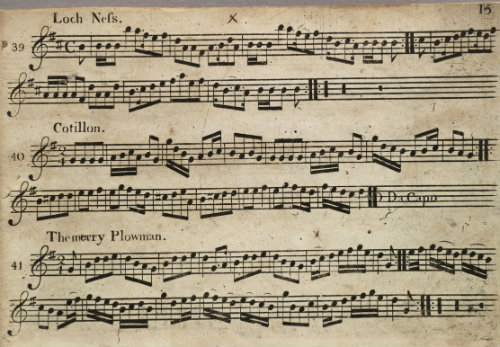Origins of a Collection: A look at R.S. Williams' Historic Musical Instruments


*Please Note: This composition is not from the exact period as the ROM's Hooked Harp.
The ROM’s Collection
The ROM holds a wonderful collection of historic musical instruments that, at one time, were owned by the R.S. Williams family. They were best known as manufacturers, distributors, and collectors of contemporary and historic musical instruments. Predominantly acquired through trade, the Williams collected numerous instruments and sheet music of European, British, and Canadian origin; many of which were made during the Late Middle Ages, Renaissance, Baroque, Rococo, and Neoclassical periods (14th-19th centuries). Tracing over 400 years of European cultural development, these highly decorative instruments provide a glimpse into the fascinating social history of European life. While many remain in the care of our collections and research staff in the European Department, several instruments are on display in the Samuel European Galleries on the third floor.

The Origins of R.S. Williams
Richard Sugden Williams Sr. (1834-1906) was born in London, and immigrated to Canada with his parents in the late 1830’s. Upon settling in Hamilton, the young Williams apprenticed with the musical instrument manufacturer and repairman, William Townsend—who specialized in melodeons. He learned a range of manufacturing techniques and developed his skill in repairing instruments. This formative experience also fostered his appreciation for the craftmanship and design of instruments. He also became increasingly fascinated with antique violins, thus inspiring his connoisseurship for music and instruments.
For a longer biography, visit the Canadian Encyclopedia.

Italian Concerto in F Major, 1st movement. BWV 971. Composed by Johann Sebastian Bach. 1735.
*Please Note: This composition is not from the exact period as the ROM's Harpsichord.
The Family Business
Williams eventually founded R.S. Williams & Sons, a company that specialized in the manufacturing, selling, wholesaling, and trading of musical instruments. This prolific family business established Canada as a major manufacturer and distributor of musical instruments in the 19th and 20th centuries. Williams and his son, R.S. Williams Jr. (1873-1945)—who later became the President of R.S. Williams & Sons Co. Limited after his father’s death—retained numerous antique instruments acquired through sales. It was common practice during the 19th and early 20th century to trade-in old instruments when purchasing a new one.

Viola Bastarda Diminutions on Susanne ung jour (after Orlando di Lassus). Composed by Francesco Rognoni. 1600s.
*Please Note: This composition is not from the exact period as the ROM's Treble Viol Dessus.
Connoisseurship & Collection
Both father and son shared a passion for music history and the art of crafting instruments. They also recognized the educational potential of the collection and were determined to use it as a pedagogical resource. Their belief that young musicians would benefit from exposure to such artefacts inspired the curation of a comprehensive exhibition located in their monumental Toronto store coined the “music house”. They displayed priceless lyres, viols, and harpsichords—to name a few—that traced the evolution and development of such instruments. They also offered rare books and sheet music in their library for the public to enjoy. Their desire to “unravel the mysteries” of early European music history, as stated by Ladislaw Cselenyi-Granch, and popularize it in the 20th century is deeply embedded within their prized collection.
To this day, this treasured collection remains one of the most generous gifts ever made to the ROM—gradually donated to the Museum by R.S. Williams Jr. throughout the early 20th century. Ladislaw Cselenyi-Granch, a musician, art historian, and former Curator of Musical Instruments at the ROM, dedicated his research efforts to the history of the R.S. Williams family. His research, publications, and interpretative efforts wonderfully preserve and perpetuate the legacy of this remarkable family.

*Please Note: This composition is not from the exact period as the ROM's Theorbo.
During your next visit to the Samuel European Galleries I hope you enjoy the many musical recordings, featured in the exhibition, that animate these historic instruments.
Further Readings
Ladislav Cselenyi-Granch. 1971. Musical Instruments in the Royal Ontario Museum (Exhibition Catalogue). North York, Ontario: Thorn Press.ML 462 T67 R68 1971
Ladislav Cselenyi-Granch. 1996. Under The sign of the Big Fiddle Musical Instruments.Toronto, Ontario: Natural Heritage/Natural History Inc.ML 424 R27 C84 1996
